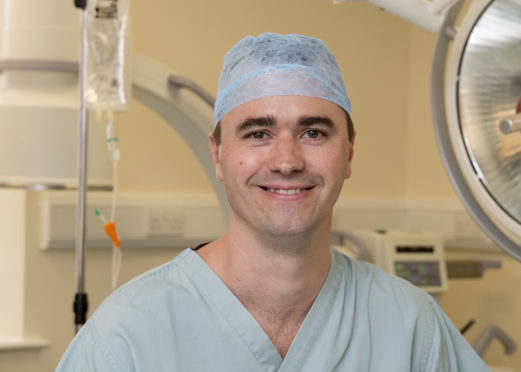
A tiny implant being tested in Scotland could cure an eye condition that can cause blindness.
Specialists at the Princess Alexandra Eye Pavilion in Edinburgh are taking part in an international study that replaces traditional eye drops with an implant no bigger than a grain of sand.
The Pavilion’s Dr Andrew Tatham, one of the world’s leading ophthalmic surgeons, believes the treatment for glaucoma could eventually become available on the NHS.
“The micro-implant goes into the front chamber of the eye and contains the same amount of medication as a single eye drop but delivers it exactly where it is needed,” Dr Tatham said.
“So far, 80% of patients treated with the implant have been able to stop their eye drops completely for at least a year. Most people with glaucoma have to take eye drops for the rest of their lives to try to control the disease.
“Many find the drops difficult to use or forget to put them in, and for some they are not effective.
“They need to be taken for life and often cause side effects like redness and dry eye – for many people the main symptom of glaucoma is the side effects from the eye drops.”
Glaucoma is a common cause of blindness, affecting 1-2% of people over 40 years old and 5% of those over 75. It is a problem where fluid inside the eye is unable to drain. This causes a build-up of pressure that damages nerves connecting the eye to the brain. As nerve damage is irreversible, it is important to identify glaucoma at an early stage and start treatment.
“The implant is a very quick procedure, just a couple of minutes, and is done with a device that looks like a pen,” said Dr Tatham.
“The tip is inserted on to the cornea, and a little button deposits the pellet into the front of the eye.
“It’s almost certainly going to be available on a wider scale and I think it will come on to the NHS, dependent on cost.”
Another drop-free option for glaucoma is a laser treatment called SLT (Selective Laser Trabeculoplasty), a painless procedure where a laser is used to open the eye’s natural drainage channels.
A study published in The Lancet earlier this year showed 75% of people treated with laser still don’t require eye drops three years on.
Dr Tatham’s research team are currently examining whether there are differences between the laser and implant treatments.
The potential breakthrough in glaucoma care comes just weeks after the government announced it was considering compulsory eye tests for drivers once they turn 70.
Research published by Philadelphia scientists last week suggests older drivers with glaucoma are more likely to be involved in accidents.
Dr Tatham said: “The tests would pick up the people who don’t go for an eye test because they don’t think there is anything wrong with their eyes. It would allow people with eye diseases like glaucoma to be picked up at an earlier age.”

Enjoy the convenience of having The Sunday Post delivered as a digital ePaper straight to your smartphone, tablet or computer.
Subscribe for only £5.49 a month and enjoy all the benefits of the printed paper as a digital replica.
Subscribe